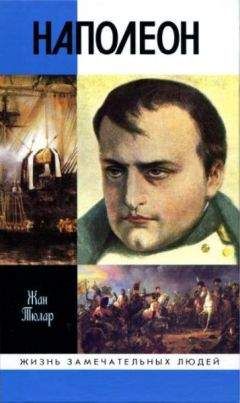Edwards, S. M. (2000–2001), «The technology paradox: Efficiency versus creativity», Creativity Research Journal, 13(2), 221–228.
Eindhoven, J. E., & Vinacke, W. E. (1952), «Creative processes in painting», Journal of General Psychology, 47, 165–179.
Einstein, A. & Infeld, L. (1938), The Evolution of Physics, New York, Simon and Schuster.
Eisenberg, J. (2002), «Does Individual Motivation and Creativity Predict Group Creative Performance? Yes, But with Some Surprises», Paper presented at the International WAM Meeting, July 2002, Lima, Peru.
Ekman, P. (1994), «Moods, emotions and traits», in P. Ekman & R. J. Davidson (eds.), The nature of emotions: Fundamental questions (p. 56–58), New York, Oxford University Press.
Ericsson, K. A. (1990), «The nature of exceptional performance», in D. L. Baltes & R. M. Lerner (Ed.), Life-span development and behavior (p. 187–217), Hillsdale (NJ), Erlbaum.
Ericsson, K. A., Krampe, R. T., & Tesch-Romer, C. (1993), «The role of deliberate practice in the acquisition of expert performance», Psychological Review, 100(3), 363–406.
Eysenck, H. J. (1995), Genius, Cambridge, Cambridge University Press.
Feist, G. J. (1998), «A meta-analysis of personality in scientific and artistic creativity», Personality and Social Psychology Review, 2(4), 290–309.
Feist, G. J. (1999), «Affect in artistic and scientific creativity», in S. W. Russ (ed.), Affect, creative experience and psychological adjustment (p. 93–108). Philadelphia, Taylor & Francis.
Feldhusen, J. F. (1995), «Creativity: A knowledge base, metacognitive skills, and personality factors», Journal of Creative Behavior, 29(4), 255–268.
Feldman, D. H., Csikszentmihalyi, M., & Gardner, H. (1994), Changing the world: A framework of the study of creativity, Westport (CT), Praeger.
Finke, R. A. (1990), Creative imagery: Discoveries and inventions in visualization, Hillsdale (NJ), England, Erlbaum. Finke, R. A., Ward, T. B., & Smi th, S. S. (1992), Creative cognition: Theory, research, and applications, Cambridge (MA), MIT Press.
Frensch, P. A., & Sternberg, R. J. (1989), «Expertise and intelligent thinking: When is it worse to know better?», in R. J. Sternberg (Ed.), Advances in the psychology of human intelligence (Vol. 5, p. 157–188). Hillsdale (NJ), Erlbaum.
Freud, S. (1908/1959), «Creative writers and day-dreaming», in J. Stratchey (ed.), Standard Edition of the Complete Psychological Works of Sigmund Freud (Vol. 9). London, Hogarth Press.
Frijda, N. (1994), «Varieties of affect: Emotions and episodes, moods and sentiments», in P. Ekman & R. J. Davidson (eds.), The nature of emotions: Fundemental questions (p. 59–67), New York, Oxford University Press.
Furnham, A. (1994), «A content, correlational and factor analytic study of four tolerance of ambiguity questionnaires», Personality and Individual Differences, 16(3), 403–410.
Gaines, R. & Price-Williams, D. (1990), «Dreams and imaginative processes in American and Balinese artists», Psychiatric Journal of the University of Ottawa, 15(2), 107–110.
Galton, F. (1879). «Psychometric experiments», Brain, 2, 148–162.
Galton, F. (1883), Inquiries into human faculty and its development, London, Macmillan.
Gardner, H. (1982), Art, mind, and brain, New York, Basic Books.
Gardner, H. (1988), «Creativity: An interdisciplinary perspective», Creativity Research Journal, 1, 8–26.
Gardner, H. (1993), Creating minds, New York, Basic Books.
Georgsdottir, A., & Lubart, T.I. (sous presse), «La flexibilite cognitive et la creativite», Psychologie Francaise.
Getz, I., & Lubart, T. I. (2000), «An emotional-experiential perspective on creative symbolic-metaphorical processes», Consciousness and Emotion, 1(2), 89–118.
Getz, I., & Lubart, T. I. (2001), «Psychologie, economie et creativite. Exploration de leurs interactions», Psychologie Frangaise, 46, 4, 365–378.
Getz, I., & Robinson, A. G. (2003), Vos idees changent tout, Paris, Editions d'Organisation.
Getzels, J., & Csikszentmihalyi, M. (1976), The creative vision: A longitudinal study of problem-finding in art, New York, Wiley-Interscience.
Ghiselin, B. (1963), «Ultimate criteria for two levels of creativity», in C. W. Taylor & F. Barron (Eds.), Scientific creativity: its recognition and development (p. 30–43), New York, Wiley.
Ghiselin, B. (1985), The creative process, Berkeley (CA), University of California Press.
Glover, J. A. (1979), «Levels of questions asked in interview and reading sessions by creative and relatively noncreative college students», Journal of Genetic Psychology, 135(1), 103–108.
Goldsmi th, R. E. (1987), «Creative level and creative style», British Journal of social psychology, 26(4), 317–323.
Goor, A., & Sommerfeld, R. E. (1975), «A comparison of problem-solving processes of creative students and noncreative students», Journal of Educational Psychology, 67(4), 495–505.
Gough, H. G. (1961), Techniques for identifying the creative research scientist, Conference on the Creative Person, Berkeley, University of California, Institute of Personality Assessment and Research.
Gough, H. G. (1979), «A creative personality scale for the adjective check list», Journal of Personality and Social Psychology, 37(8), 1398–1405.
Gough, H. G., & Gendre, F. (1982), Manuel de la Liste d'Adjectifs ACL, Paris, Editions du Centre de Psychologie Appliquee.
Gray, C. E. (1966), «A measurement of creativity in western civilization», American Anthropologist, 68, 1384–1417.
Gruber, H. E., & Dav is, S. N. (1988), «Inching our way up Mount Olympus: The evolving-systems approach to creative thinking», in R. J. Sternberg (Ed.), The nature of creativity (p. 243–270), New York, Cambridge University Press.
Guastello, S. J., Shissler, J., Driscoll, J., & Hyde, T. (1998), «Are some cognitive styles more creatively productive than others?», Journal of Creative Behavior, 32(2), 77–91.
Guilford, J. P. (1950), «Creativity», American Psychologist, 5, 444–454.
Guilford, J. P (1956), «Structure of intellect», Psychological Bulletin, 53, 267–293.
Guilford, J. P (1967), The nature of human intelligence, New York, McGraw-Hill.
Guilford, J. P (1968), Intelligence, creativity, and their educational implications, San Diego, (CA), Robert Knapp.
Guilford, J. P (1979), «Some incubated thoughts on incubation», Journal of Creative Behavior, 13(1), 1–8.
Guilford, J. P (1982), «Is some creative thinking irrational?», Journal of Creative Behavior, 16, 151–154.
Hadamard, J. (1945), An essay on the psychology of invention in the mathematical field, Princeton (NJ), Princeton University Press.
Harrington, D. M. (1999), «Conditions and settings/environment», in M. A. Runco & S. R. Pritsker (eds.), Encyclopaedia of creativity (Vol. 1, p. 323–340), New York, Academic Press.
Harrington, D. M., Block, J., & Block, J. H. (1983), «Predicting creativity in preadolescence from divergent thinking in early childhood», Journal of Personality and Social Psychology, 45(3), 609–623.
Harrington, D. M., Block, J., & Block, J. H. (1987), «Testing aspects of Carl Rogers's theory of creative environments: Child-rearing antecedents of creative potential in young adolescents», Journal of Personality and Social Psychology, 52(4), 851–856.
Hayes, J. R. (1989), «Cognitive processes in creativity», in J. A. Glover, & C. R. Reynolds (Ed.), Handbook of creativity (p. 135–146), New York, Plenum.
Hennessey, B. A., Amabile, T. M., & Martinage, M. (1989), «Immunizing children against the negative effects of reward», Contemporary Educational Psychology, 14, 212–227.
Heston, R. W. (1966), «Psychiatric disorders in foster-home reared children of schizophrenic mothers», British Journal of Psychiatry, 112, 819–825.
Hilgard, E. R. (1980). «The trilogy of mind: Cognition, affection, and conation», Journal of the History of the Behavioral Sciences, 16, 107–117.
Hirt, E. R., Levine, G. M., McDonald, H. E., Melton, R. J., & Martin, L. L. (1997), «The role of mood in quantitative and qualitative aspects of performance: Single or multiple mechanisms?», Journal of Experimental Social Psychology, 33(6), 602–629.
Ho, D. Y. F., & Lee, L. Y. (1974), «Authoritarianism and attitude toward filial piety in Chinese teachers», Journal of Social Psychology, 97, 305–306.
Hocevar, D. (1976), «Dimensionality of creativity», Psychological Reports, 39, 869–870.
Hocevar, D., & Bachelor, P. (1989), «A taxonomy and critique of measurement used in the study of creativity», in J. A. Glover, R. R. Ronning & C. R. Reynolds (Eds.), Handbook of creativity (p. 53–76), New York, Plenum.
Hood, R.W. (1973), «Rater originality and the interpersonal assessment of levels of originality», Sociometry, 36, 80–88.
Hull, D. L., Tessner, P. D., & Di amond, A. M. (1978), «Planck's principle: Do younger scientists accept new scientific ideas with greater alacrity than older scientists?» Science, 202, 717–723.
Huteau, M. (1985), Les conceptions cognitives de la personnalite, Paris, PUF.
Huteau, M. (1987), Style cognitif et personnalite, Lille, Presses Universitaires de Lille.
Isaksen, S. G., & Parnes, S. J. (1985), «Curriculum planning for creative thinking and problem solving», Journal of Creative Behavior, 19(1), 1–29.
Isaksen, S.G., Lauer, K.J., Ekva ll, G., & Britz, A. (2000–2001), «Perceptions of the best and worst climates for creativity: Preliminary validation evidence for the situational outlook questionnaire», Creativity Research Journal, 13(2), 171–184.
Isaksen, S.G. & Treff inger, D.J. (1985), Creative problem solving: The basic course, Buffalo (NY), Bearly Limited.
Isen, A. M. (1999), «On the relationship between affect and creative problem solving», in S.W. Russ (ed.) Affect, creative experience, and psychological adjustment, p. 3–18, Philadelphia (PA), Brunner Mazel.
Isen, A. M., Daubman, K. A., & Nowicki, G. P. (1987), «Positive affect facilitates creative problem solving», Journal of Personality and Social Psychology, 52(6), 1122–1131.
Jamison, K. R. (1993), Touched with fire: Manic-depressive illness and the artistic temperament, New York, Free Press.
Jay, E.S., & Perkins, D.N. (1997), «Problem finding: The search for mechanism», in M.A. Runco (ed.), The creativity research handbook (Vol. 1, p. 257–293). Cresskill, NJ: Hampton.
Jeannot, A. (1986), Honore de Balzac: leforcat de la gloire, Paris, Ciba-Geigy, Editions Printel.
Johnson-Laird, P.N. (1988), «Freedom and constraint in creativity», in R.J. Sternberg (ed.), The nature of creativity (p. 202–219), New York, Cambridge University Press.
Kant, I. (1790/1888), The philosophy of Kant, as contained in Extracts from his own writings (selected and translated by J. Watson), Glasgow, Maclehose & Jackson.
Kaufmann, G. (1995), «A theory of cognitive strategy preferences in problem solving», in G. Kaufmann & T. Helstrup & K. H. Teigen (eds.), Problem solving and cognitive processes: A festschrift in honour of Kjell Raaheim (p. 45–76), Fagbokforlaget, Bergen/Sandviken.
Kaufmann & T. Helstrup & K. H. Teigen (eds.), (1997, August), «The mood and creativity puzzle», Paper presented at the American Psychological Association Convention.
Kaufmann, G., & Vosburg, S. K. (1997), «“Paradoxical” mood effects on creative problem-solving», Cognition and Emotion, 11(2), 151–170.
Kaufman, J. C. & Baer J. (2002), «Could Steven Spielberg manage the yankees? Creative thinking in different domains», The Korean Journal of Thinking and Problem Solving, 12(2), 5–14.
Kay, S. (1991), «The figural problem solving and problem finding of professional and semi professional artists and non artists», Creativity Reseach Journal, 4, 233–252.
Keefe, J. A., & Magaro, P. A. (1980), «Creativity and schizophrenia: An equivalence of cognitive processing», Journal of Abnormal Psychology, 89, 390–398.
Kim, S. H. (1990), Essence of creativity: A guide to tackling difficult problems, London, Oxford University Press.
Kipling, R. (1937/1985), «Working tools», in B. Ghiselin (ed.), The creative process: A symposium (p. 161–163), Berkeley, University of California Press.
Kirton, M. J. (ed). (1994), Adaptors and innovators: Styles of creativity and problem solving (revised ed.), London, Routledge.
Klein, R. L. (1972), «Age, sex, and task difficulty as predictors of social conformity», Journal of Gerontology, 27(2), 229–236.
Koestler, A. (1964), The act of creation, New York, Macmillan.
Kogan, N., & Pankove, E. (1972), «Creative ability over a five-year span», Child Development, 43(2), 427–442.
Koifman, R. (1998), The relationship between IQ, EQ and creativity, unpublished manuscript, Winsdor.
Krippner, S. (1967), «The 10 commandments that block creativity», Gifted Child Quarterly, 11(3), 144–156.
Kris, E. (1952), Psychoanalytic exploration in art, New York, International Universities Press.
Kubie, L. S. (1958), The neurotic distortion of the creative process, Lawrence, University of Kansas Press.
Kuhn, T. S. (1962), The Structure of Scientific Revolutions, Chicago, University of Chicago Press.
Langley, P., Simon, H., Bradshaw, G. L., & Zytkow, J. M. (1987), Scientific discovery: Computational explorations of the creative process, Cambridge, MIT Press.
Lautrey, J. (1980), Classe sociale, milieu familial, intelligence, Paris, PUF.
Lautrey, J., Bideaud, J., & Pierre-Puysegur, M. A. (1986), «Aspects genetiques et differentiels du fonctionnement cognitif lors de taches de sedation», L'Annee Psychologique, 86, 489–526.
Lautrey, J., & Ribeaupierre, A. de (2004), «Psychology of human intelligence in France and french-speaking Switzerland», in R. J. Sternberg (ed.), International handbook of the psychology of human intelligence, Cambridge, Cambridge University Press.
Lehman, H. C. (1953), Age and achievement, Princeton, NJ, Princeton University Press.
Li, J. (1997), «Creativity in horizontal and vertical domains», Creativity Research Journal, 10(2–3), 107–132.
Lubart, T. I. (1994), «Creativity», in R. J. Sternberg (ed.), Thinking and problem solving (p. 289–332), New York, Academic Press.
Lubart, T. I. (1999a), «Componential models», in M. A. Runco & S. R. Pritsker (eds.), Encyclopaedia of Creativity (Vol. 1, p. 295–300), New York, Academic Press.
Lubart, T. I. (1999b) «Creativity across cultures», in R. J. Sternberg (ed.), Handbook of creativity (p. 339–350), Cambridge, Cambridge University Press.
Lubart, T. I. (2000–2001), «Models of the creative process: Past, present and future», Creativity Research Journal, 13(3–4), 295–308.
Lubart, T. I. (2003), «In search of creative Intelligence», in R. J. Sternberg, J. Lautrey, & T. I. Lubart (eds.), Models of intelligence: International prospectives (p. 279–292). Washington DC, American Psychological Association.
Lubart, T. I., & Getz, I. (1997), «Emotion, metaphor, and the creative process», Creativity Research Journal, 10, 285–301.
Lubart, T. I. (1998), «The influence of heuristics on psychological science: A case study of research on creativity», Journal for the Theory of Social Behaviour, 28(4), 435–457.





